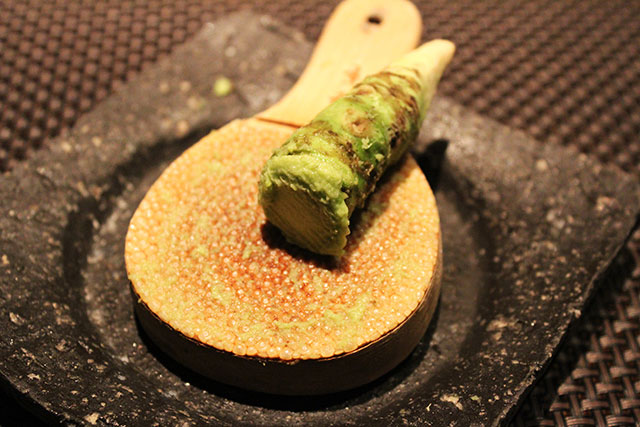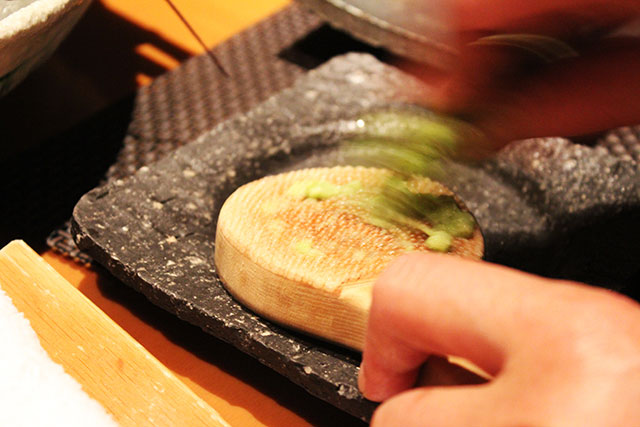Japanese kitchens are equipped with a few simple, elegant and highly-functional tools…great knives, a mortar and pestle, a rice cooker, chopsticks, and an oroshi-gane, or hand-held grater.

The oroshi-gane is a key implement used in daily Japanese cooking. Primarily used to grate roots, such as wasabi and ginger, the oroshi-gane is also used for grating daikon radishes, wild mountain yams and citrus zests.
The grater is commonly found in three varieties: plastic, ceramic and metal. They each  feature a small handle that the cook holds, a flat surface with thorn-like projections against which food is grated and a collection trough that captures the paste and juice from the grated food item. In old times most households owned a metal one. Today, plastic ones are gaining popularity as they are less expensive and can be replaced when the grating surface becomes dull. They also come in a variety of colors and fun shapes, making the tedious grating experience a bit more exciting. Ceramic graters are easily breakable, but don’t retain odors which is nice when you grate a lot of ginger, wasabi, onions, or any herbs and vegetables that have a strong scent. Oroshi-gane were originally made from sharkskin stretched and glued onto a wooden board. The rough skin, similar to sandpaper in texture, turned wasabi roots into mush, creating the paste-like wasabi we know today.
feature a small handle that the cook holds, a flat surface with thorn-like projections against which food is grated and a collection trough that captures the paste and juice from the grated food item. In old times most households owned a metal one. Today, plastic ones are gaining popularity as they are less expensive and can be replaced when the grating surface becomes dull. They also come in a variety of colors and fun shapes, making the tedious grating experience a bit more exciting. Ceramic graters are easily breakable, but don’t retain odors which is nice when you grate a lot of ginger, wasabi, onions, or any herbs and vegetables that have a strong scent. Oroshi-gane were originally made from sharkskin stretched and glued onto a wooden board. The rough skin, similar to sandpaper in texture, turned wasabi roots into mush, creating the paste-like wasabi we know today.
Have you used this type of grater before? Share your stories!
Leave a Reply